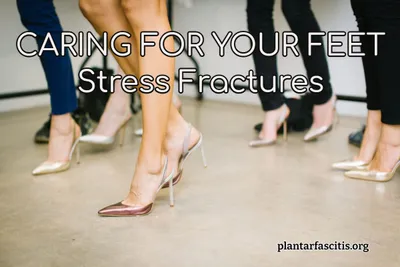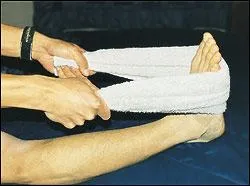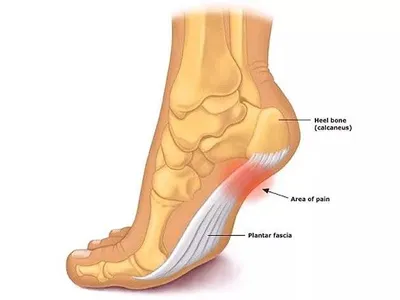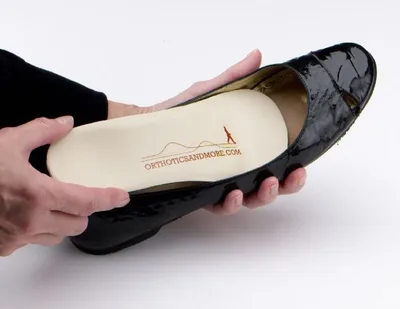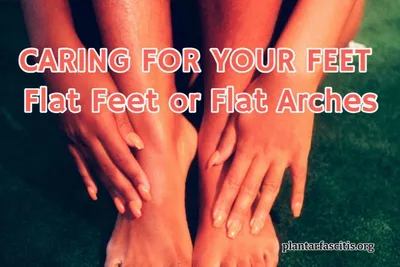Foot Care- Stress Fractures
Foot stress fractures are fractures of bones that usually occur without one serious injury to the bone.
They are usually caused by excessive pressure applied to the bone, either suddenly or over time.
Usual causes are: carrying a heavy load over a long distance, running or walking much further than normal, repeated minor injuries to the same bone, constant pressure on a bone for some time, and jumping down on foot repeatedly.
Stress fractures are thin cracks in the bone without separating the fractured pieces.
These fractures may not show up on an x-ray until healing begins, up to 3 weeks after the injury.
The most common site of foot stress fractures is in the metatarsals.
The most common symptoms of a foot stress fracture are:
1. Pain in a very localized area of the foot occurs whenever you bear weight or press on the area. The pain is deep within the foot and over a bone.
2. Swelling above the fracture. It is sometimes described as “silver dollar swelling,” as the swollen area is the size of a silver dollar. The entire foot is usually not excessively swollen, only the area above the fracture.
3. There may not be any signs of “black and blue” discolorations over the fracture, as would appear with other types of fractures.
4. When your weight is off the foot, such as when you are sitting, you will usually be able to move the foot without pain.
5. These symptoms persist until the foot is treated or the fracture heals. It usually takes fractures 4 to 8 weeks to heal with proper treatment.
Foot stress fractures can be very frustrating because they may not show up on X-rays for weeks after the injury. Doctors frequently diagnose a stress fracture after a careful history, looking for excessive weight-bearing activities.
Other methods of early detection of stress fractures include C.A.T. Scans and M.R.I. Studies.
Treatment and Prevention of Foot Stress Fractures
Stress fractures are tiny hairline breaks that can occur in the bones of the foot.
They’re commonly caused by overuse or repetitive activity and are very common in runners and athletes who participate in sports that involve running or jumping.
Treatment for Foot Stress Fractures
Treatment usually includes resting and staying off the affected foot to allow it time to heal.
Here is a more detailed approach:
- Rest: Stop any exercise or activities that cause pain. If necessary, switch to a non-weight-bearing activity, such as swimming while your foot heals.
- Ice: Apply ice packs to your foot for 15-20 minutes, several times daily to help reduce swelling.
- Compression: Consider wearing an elastic compression bandage (like an Ace wrap) to help reduce swelling.
- Elevate: Whenever possible, elevate your foot above the level of your heart, especially at night, to help reduce inflammation and speed up recovery.
- Medication: Non-prescription pain relievers may be used to help manage pain associated with stress fractures.
- Supportive footwear: Wear firm-soled shoes or a stiff-soled boot until completely healed.
A physician might recommend immobilization with a cast or surgery for proper healing for severe cases.
Prevention of Foot Stress Fractures
Preventing stress fractures involves proper conditioning and good training techniques:
- Gradually increase activity levels: Avoid ramping up intensity, duration, and frequency suddenly, especially when beginning new exercise regimen or sport.
- Use the right footwear: Shoes should provide ample support and be suited for the specific sport you’re participating in; replace them regularly before they wear out too much.
- Cross-training: Varying workouts (running/walking/swimming/cycling) help prevent overuse injuries like stress fractures by allowing certain muscle groups to rest while others work; this also increases overall strength and flexibility, reducing injury risk further.
- Nutrition: Ensure adequate intake of calcium and Vitamin D for bone strength.
- Strength training: Incorporating exercises that strengthen muscles supporting your lower limbs can help protect bones from the impact stresses during weight-bearing activities.
Remember, early diagnosis is vital for successful treatment so if you suspect a foot stress fracture, get medical attention promptly.
To prevent the fracture from returning, podiatrists use custom-made orthotics to remove the excessive stress from the previously fractured site and redistribute it evenly across the entire foot.
This protects not only the foot stress fracture site but all the bones of the feet by ensuring each bone will absorb its share of the stress rather than one bone absorbing it all and breaking.
If you have sustained a stress fracture of your foot and cannot stop the activity that caused it, you surely need custom-made orthotics designed to help prevent stress fractures of the feet.
Or, if you are an athlete and want to prevent stress fractures from occurring, please learn more about custom-made sports orthotics.
Medical-Surgical Shoe
A specially designed, rigid-sole shoe that podiatrists and orthopedic specialists prescribe to reduce pressure and friction on the foot.
Its top and sides are made of a soft material that encases the foot and keeps all pressure off it. The foot is held in place by velcro straps.
The sole is a rigid but comfortable material to prevent the foot and toes from bending as you walk.
If you have fractured bones, dislocated joints, bruised toes or toenails, lacerations, blisters, or sensitive skin areas, order this shoe to speed healing and reduce pain.
Care for Foot Stress Fractures
Stress fractures, often caused by overuse or repetitive impact, are small cracks that appear in the bone. These can be particularly common in the feet due to running, dancing or jumping.
Here’s how you can take care of your foot if you’re dealing with a stress fracture:
1. Rest
The first and most important step is to rest your foot as much as possible. This will give your body the time it needs to heal.
2. Icing
Applying ice to the affected area can help reduce inflammation and pain. Aim for 15-20 minutes every 3-4 hours.
3. Elevation
When sitting or lying down, try to elevate your foot above the level of your heart. This will help reduce swelling.
4. Pain Relief
Over-the-counter pain relief medication such as paracetamol or Ibuprofen can help manage discomfort.
5. Supportive Footwear
Wear shoes that provide proper support and cushioning until the fracture has healed completely.
6. Gradual Return to Activity
Once healing has begun, slowly increase your activity level while paying close attention to any signs of pain or discomfort.
Remember, it’s important not to rush recovery, as doing too much too soon could further damage your foot and prolong healing time. Always consult with a healthcare professional for personalized advice.

